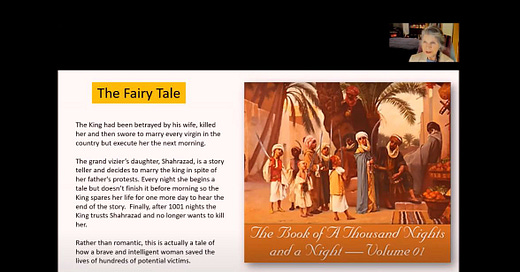What is the difference between a woman and a veil?
Absolutely nothing by some standards – but for the rest of us, why would we choose to celebrate a piece of clothing rather than the human being wearing it? And do the people who choose to celebrate ‘World Hijab Day’ know much about the hijab – or are they jumping on the bandwagon without giving it much thought.
Six years ago women in Pakistan began the ‘Aura March’ on International Women’s Day to bring attention to the desperate plight of women in that country. Not to be outdone, in 2022, religious leaders in Pakistan called for replacing International Women’s Day with ‘International Hijab Day’
Rather than supporting these women, Canada started ‘Celebrating World Hijab Day’ in it’s schools several years ago demonstrating a rather myopic view in two ways:
The idea of ‘celebrating’ conveys a positive spin that cannot fail to affect impressionable young minds, and
‘Celebrating’ fails to accurately reflect that where sharia is strictly enforced, the hijab is compulsory and women have little reason to celebrate. This can happen to women anywhere, not just in Islamic countries.
For some, the idea of veiled women may conjure up ‘Tales of Arabian Nights’, for others a fashion craze being sported by TikTok influencers or a fun event at school - allegedly to encourage multiculturalism but often presenting a very one sided view of the subject.
For others, the veil is none of these things.
Koran 33:59 O Prophet, tell your wives and your daughters and the women of the believers to bring down over themselves [part] of their outer garments. That is more suitable that they will be known and not be abused. And ever is Allah Forgiving and Merciful.
Hadith: Bukhari 146 “…So Allah revealed the verses of "Al-Hijab" (A complete body cover excluding the eyes).”
Rather than joining with the religious leaders in Pakistan or Iran, perhaps we can give some thought to the hijab not as it is portrayed in fashion magazines and fairy tales, but how it is experienced by women who dare not resist the doctrinal obligation to wear it. 100,000 women marched against wearing the hijab in 1979 Iran, but 45 years later they, and their female children, are still forced to comply owing to sharia. The same is true for women in Afghanistan, they have no choice and many have died as a result.
So let’s step out of our comfort zone and talk about the less attractive aspects of the hijab on International Women’s Day, and the day after and the next. And remember it is the person wearing the clothing that matters, not the cloth.
To learn about the hijab from it’s inception to present day, please watch this video and share it with your friends for International Women’s Day or any other day. Knowledge and a willingness to communicate that knowledge is how we can support those women who are compelled to wear the veil no matter where they live.
References:
Video: Unveiling the mystery
Iran 1979: https://rarehistoricalphotos.com/women-protesting-hijab-1979/
Canada 2024: https://www.vsb.bc.ca/_ci/p/70620
Pakistan 2023: https://thefridaytimes.com/08-Mar-2023/another-women-s-day-in-pakistan-but-where-do-women-stand
Iran 2023: https://www.bbc.com/news/world-65220595
Afghanistan 2024: https://news.un.org/en/story/2024/02/1146177
World Hijab Day: https://worldhijabday.com/12th-annual-whd-press-release/
Koran 33:59 https://legacy.quran.com/33/59
Hadith (Bukhari 146) https://sunnah.com/bukhari:146




